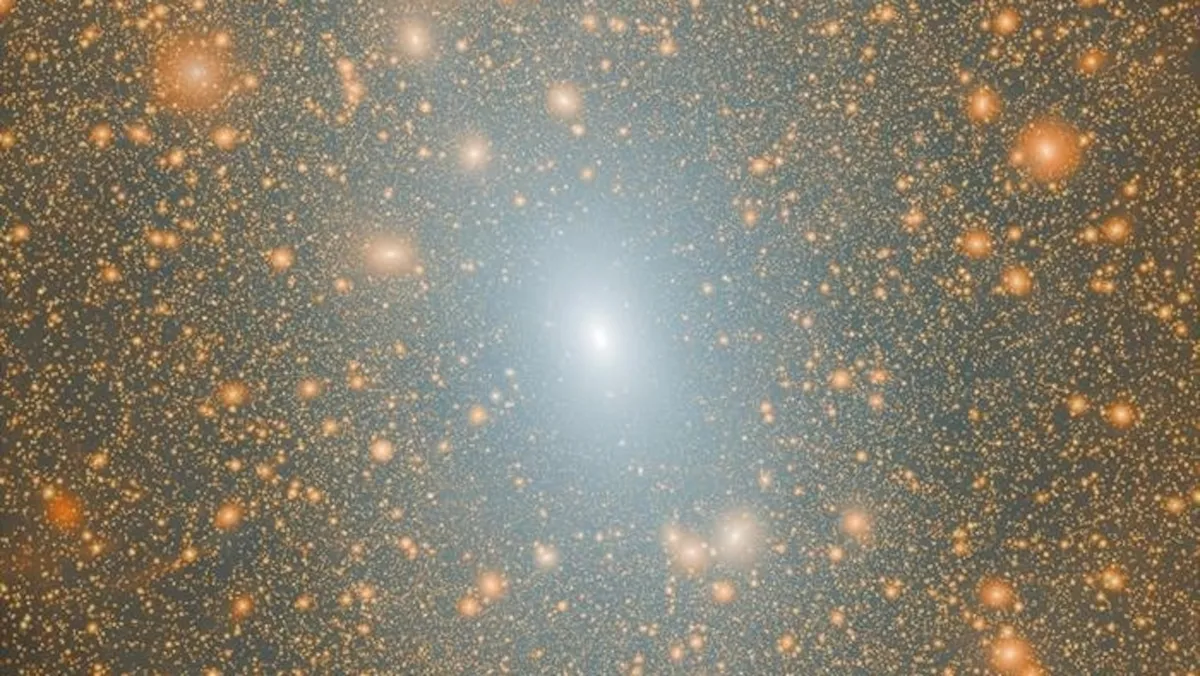
Recent studies suggest that there could be significantly more satellite galaxies orbiting the Milky Way than previously recognized. Astronomers estimate that as many as 100 undiscovered galaxies, too faint to be detected with current observational methods, may surround the galaxy that houses our Earth and solar system. This groundbreaking discovery was announced by cosmologists at Durham University during the Royal Astronomical Society's National Astronomy Meeting held in Durham.
The researchers utilized a cutting-edge technique that merges the highest-resolution supercomputer simulations available with advanced mathematical modeling. This innovative approach allowed scientists to predict the existence of what are termed "missing orphan galaxies." Isabel Santos-Santos, the lead researcher from Durham University's Institute for Computational Cosmology, emphasized that while the Milky Way already has approximately 60 confirmed companion satellite galaxies, there are likely dozens more faint galaxies orbiting at close distances.
The potential discovery of these faint galaxies could significantly bolster the Lambda Cold Dark Matter (LCDM) theory, which is the prevailing model of cosmology explaining the large-scale structure of the universe and galaxy formation. According to this model, galaxies typically form within massive clumps of dark matter called halos. It posits that ordinary matter, composed of atoms, makes up only 5% of the universe's total content, while 25% consists of cold dark matter, and the remaining 70% is attributed to dark energy.
Most known galaxies in the universe are low-mass dwarf galaxies that orbit larger galaxies like the Milky Way. The existence of these faint companion galaxies presents challenges to the LCDM model, which suggests there should be a greater number of satellite galaxies than previous simulations have indicated. However, the new research technique employed by the team allows for a more accurate assessment of the abundance, distribution, and properties of these orphan galaxies.
Co-researcher Carlos Frenk highlighted the significance of their findings, stating that the model showcases the incredible potential of combining physics and mathematics. He noted, "Using the laws of physics, solved using a large supercomputer, and mathematical modeling, we can make precise predictions that astronomers, equipped with new, powerful telescopes, can test." This synergy between computational methods and observational astronomy may revolutionize our understanding of the universe.
Current cosmological simulations often lack the necessary resolution to investigate faint satellite galaxies adequately. They also fail to provide the precision required for studying the evolution of small dark matter halos that host these dwarf galaxies, potentially leading to inaccuracies in their formation. Santos-Santos concluded by expressing optimism about future advancements: "If our predictions are correct, it adds more weight to the Lambda Cold Dark Matter theory of the formation and evolution of structure in the universe." With new telescopes and instruments on the horizon, astronomers may soon have the capability to detect these elusive galaxies, offering exciting insights into the universe's history and structure.